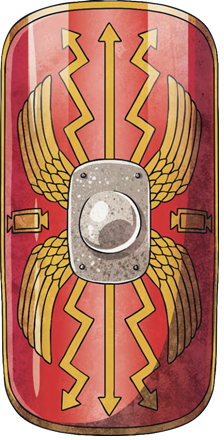Week Beginning 11th May
[dropshadowbox align=”none” effect=”lifted-both” width=”auto” height=”” background_color=”#5edf7e” border_width=”1″ border_color=”#dddddd” ]We hope that you all managed to have a nice long weekend, and enjoyed any celebrations for VE Day whilst following social distancing! – It would be great to see any photos of you celebrating or any decorations you put up to celebrate on Class Dojo.[/dropshadowbox]
This week our learning will be as follows;
English
Spellings – learn the following spellings: February certain height history imagine increase. Remember you can use look, cover, write, check or play a game such as hangman to help you learn your spellings.
Children who are in Violet group (Waterloo) or Toy Story group (Blackfriars) for English should work on: there, their, they’re, to, too and two.
Punctuation- Learn how to use apostrophes correctly using the following lessons from BBC bitesize daily. Children in Violet group or Toy Story group may wish to do the first lesson only then spend time practising using apostrophes to combine words.
https://www.bbc.co.uk/bitesize/articles/z4p2mfr
https://www.bbc.co.uk/bitesize/articles/zmq9kmn
Information texts – This week we will begin a new unit of work on information writing. We will aim to produce a leaflet about Queen Boudicca before the Spring half term holiday.
- Day 1- look at the PowerPoint on the features of a non-fiction (information) text. Non-fiction texts. Read an information book of your choice (either in traditional form or an e-book.) Make a list of the features which you can find in your book. There are suitable age appropriate non-fiction books on the Oxford Owl website. You will need to register if you have not already done so. https://www.oxfordowl.co.uk/for-home/find-a-book/library-page/?view=image&query=&type=book&age_group=Age+7-9&level=&level_select=&book_type=Non-fiction&series=#
If you are in Roderick Hunt group (Waterloo) or Toy Story group (Blackfriars) you may find this link helpful. https://www.oxfordowl.co.uk/for-home/find-a-book/library-page/?view=image&query=&type=book&age_group=Age+5-6&level=&level_select=&book_type=Non-fiction&series=#
- Day 2 – Look at the picture below. Make some notes. Who do you think this is? What do you notice about them?

- Day 3 – Use the link below to find out about Queen Boudicca and her revolt. Watch the video clip, read the text and have a go at the activity. Create a spider diagram of what you have learned about Boudicca from the video clip. Make sure your spider diagram is a good size so that you can add to it tomorrow. (Some children may need support with key spellings).
https://www.bbc.co.uk/bitesize/topics/zkrkscw/articles/zhn6cqt
- Day 4 – Watch the following video clip. Is there anything new you have learned about Queen Boudicca? Add the new facts you have learned to your spider diagram.
- Day 5 – Look at page 4 of the PowerPoint from day 1. Notice that the sub-headings take the form of questions. Write down 6 questions which you can answer using the information from the Boudicca and the Roman invasion video above. (Children in Violet group or Toy Story group may find that 4 questions is sufficient.)
Reading – in addition to the reading activity suggested for Day 1 children should read regularly at home and should try and include both fiction and non-fiction writing. We have suggested the following websites.
In addition, the Barrington Stoke website is now offering some free resources. These are suitable for dyslexic children but also for any child who finds reading more difficult. The texts allow children to access easier texts which have age appropriate content.
https://www.barringtonstoke.co.uk/blog/2020/03/23/free-resources-from-barrington-stoke/
Maths
It has been lovely to see all your hard work on fractions, we have now finished that unit and are moving onto money. It would be helpful to use actual coins/ notes to help the children complete the work, however if you do not have access to all the coins you may wish to use this word mat to remind the children of the different amounts – Coins word mat
- Day 1 – converting pounds and pence
Please watch the video below and then complete the worksheet – Converting pounds and pence
- Day 2 – adding money
Please watch the video below and then complete the worksheet: Adding money
- Day 3 – subtracting money
Please watch the video below and then complete the worksheet: Subtracting money
- Day 4 – Adding and subtracting money reasoning and problem solving
Worksheet 1: Adding money – reasoning and problem solving
Worksheet 2: Subtracting money – reasoning and problem solving
- Day 5 – Powerpoint: Giving change Worksheet: Giving change
In addition to the worksheets, you may want to play some money related games on TopMarks to support your learning on money: https://www.topmarks.co.uk/maths-games/7-11-years/money
Answers:
- Day 1 – Converting pounds and pence
- Day 2 – Adding money
- Day 3 – Subtracting money
- Day 4 – Adding money – reasoning and problem solving answers
Subtracting money – reasoning and problem solving answers - Day 5 –
Maths – Prism group (Waterloo) and Blue group (Blackfriars)
- Day 1 – Watch video Coin values video, then complete worksheets: Coin detective worksheet, Ordering coins worksheet
- Day 2 – How much do the ice creams cost? How much money is in my jar?
- Day 3 – Adding money: Video: adding and subtracting money, Worksheet; Who has the most money?
- Day 4 – Subtracting money: Powerpoint game: Giving change, Worksheet: Giving change
- Day 5 – Money word problems: Money word problems
In addition to the worksheets, you may want to play some money related games on TopMarks to support your learning on money: https://www.topmarks.co.uk/maths-games/5-7-years/money
Science
Children should continue with their diaries of the plants they are growing. They should also follow the science lesson below from the Oak National Academy.

https://www.thenational.academy/year-3/foundation/parts-and-function-of-a-plant-year-3-wk2-3.
History/Art
Design a Roman shield. Make sure that you look at the PowerPoint below first. Next week’s activity will be making shields so you may want to save any cardboard boxes that you have.
Make a Roman Shield PowerPoint
